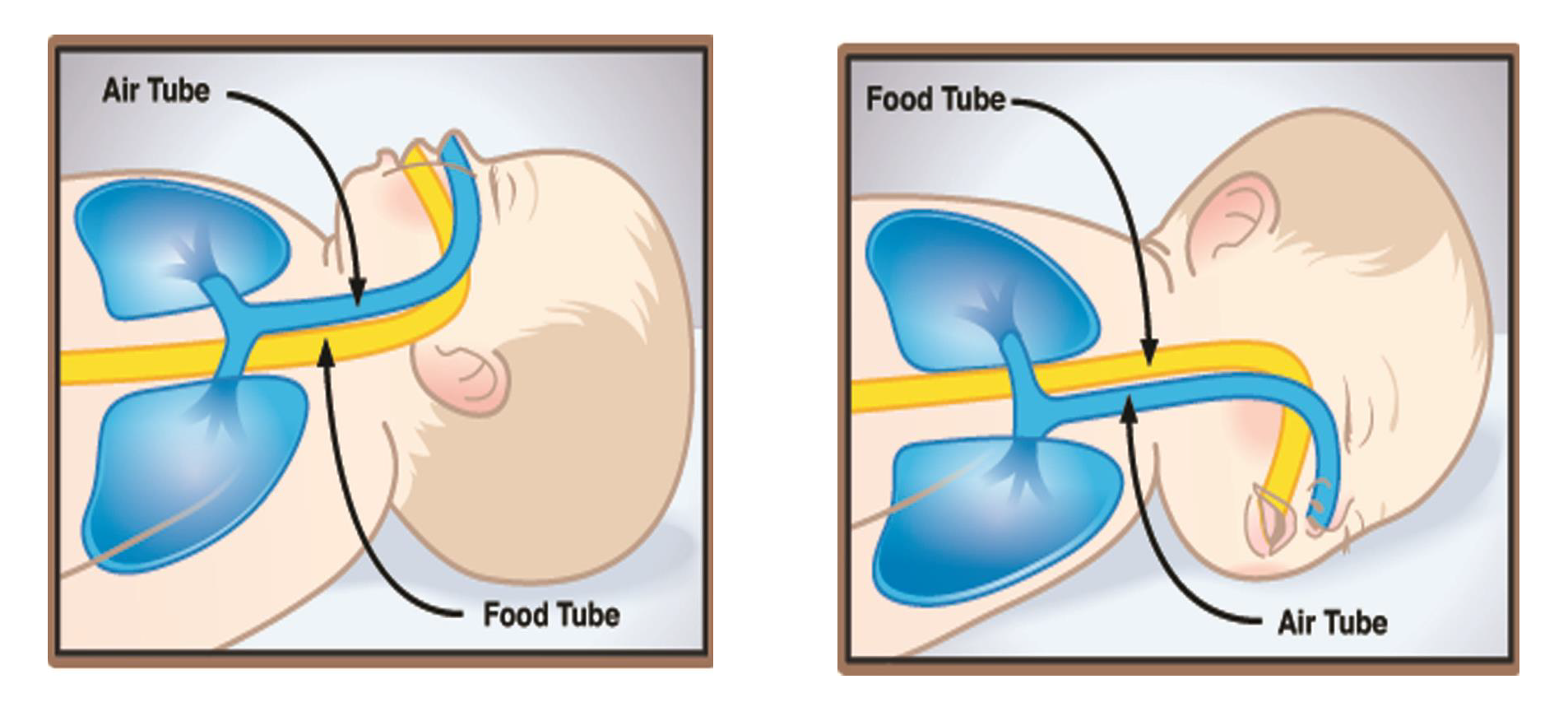Learn Why Babies Won’t Choke When Sleeping on Their Backs
Why don’t babies choke when they are on their back?
Babies are actually safer on their back. When a baby is on his back, the air tube (trachea) is on top of the esophagus (the tube that carries food). If a baby spits up while on his back, the food and fluid run back into the stomach and not to the lungs. When a baby is on his stomach, the esophagus (or food tube) is on top of the trachea and any food or fluid that is regurgitated or refluxed can more easily pool at the opening of the trachea, making it possible for the baby to aspirate or choke.


Is Your Baby’s Crib Safe?
A safe crib has:
- A firm, tight-fitting mattress.
- No loose, missing or broken hardware or slats.
- No more than 2 3/8″ between the slats (width of a soda can).
- No corner posts over 1/16″ high.
- No cutout designs in the headboard or footboard.
If you are unsure of the safety of your crib, call the U.S. Consumer Product Safety Commission at 1-800-638-2772 or go their Crib Information Center Website.
Other Baby and Child Product Recalls
View other recalls, including baby and child products and toys, in the recall section of the U.S. Consumer Product Safety Commission Website.
Tips to Stay Calm
Your baby isn’t sleeping. You’re not sleeping. Your baby’s crying and you’re reaching your breaking point. We’ve all been there.
What about Choking?
Why don’t babies choke when they are on their back? Babies are actually safer on their back. Learn why.
Myths & Facts
Debunk the myths about what is sabotaging your sleep and highlight habits that potentially risk your baby's safety.
What NOT to Do
Now that you know where your baby should sleep, do you know where your baby shouldn’t sleep?
What Is Safe Sleep
We get a lot of questions about whether a product is safe for sleep for your baby. When considering a product, there are some questions you should ask.
Safe Sleep Spaces
A crib, portable crib, bassinet, or play yard that follows the safety standards of the Consumer Product Safety Commission (CPSC) is recommended.
Since 2010, 810 babies have died in Michigan due to sleep-related deaths. In 2015, 159 infants in Michigan died due to sleep-related deaths.
Nearly 44% of infants who died of sleep-related causes were found on their stomach and 11% were found on their side.
In 2015, approximately 60% of the infants that died involved suffocation hazards present in the sleep environment, such as blankets (84%), pillows (25%), bumper pads (15%) and stuffed toys (5%).







